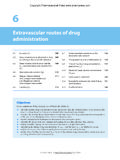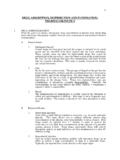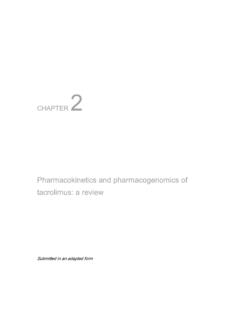Transcription of Questions & Answers: positions on specific …
1 30 Churchill Place Canary Wharf London E14 5EU United Kingdom An agency of the European Union Telephone +44 (0)20 3660 6000 Facsimile +44 (0)20 3660 5555 Send a question via our website European Medicines Agency, 2016. Reproduction is authorised provided the source is acknowledged. 19 November 2015 EMA/618604/2008 Rev. 13 Committee for Human Medicinal Products (CHMP) Questions & Answers: positions on specific Questions addressed to the Pharmacokinetics Working Party (PKWP) Background In the context of assessment procedures, the input of the Pharmacokinetics Working Party (PKWP), (previously the Therapeutic Subgroup on Pharmacokinetics of the Efficacy Working Party (EWP-PK subgroup)), may be sought by the CHMP or, following CHMP s agreement, by other Committees, Working parties or the CMD(h).
2 The objective is to address specific Questions in relation to pharmacokinetic evaluations and particularly the requirements and assessment of bioequivalence studies. The positions , which are subsequently elaborated by the PKWP in response to such Questions , are then forwarded to the enquiring party for consideration in their assessment. It is understood that such positions will be reflected in procedure-related assessment reports, if applicable. In some cases however, these positions might also be of more general interest as they interpret a very specific aspect that would not necessarily be covered by a guideline.
3 This paper summarises these positions which have been identified as being within this scope. In addition, general clarifications related to guidelines authored by the PKWP are subject to specific positions in this paper. It should be noted that these positions are based on the current scientific knowledge as well as regulatory precedents. They should be read in conjunction with the applicable guidelines on bioequivalence in their current version. If the Questions have initially been raised in the context of specific assessment procedures, details of these procedures have been redacted for reasons of confidentiality.
4 This compilation will be updated with new positions as soon as they become available. Likewise, if a position is being considered outdated, due to new evolutions in the scientific knowledge including revisions to the applicable guidelines, positions will be removed from this document. positions previously prepared by the EWP-PK subgroup are endorsed by the current PKWP unless removed from this document. The positions in this document are addressing very specific aspects. They should not be quoted as product- specific advice on a particular matter as this may require reflection of specific data available for this product.
5 By no means should these positions be understood as being legally enforceable. Last update: July 2015 Questions & Answers: positions on specific Questions addressed to the pharmacokinetics working party EMA/618604/2008 Rev. 13 Page 2/48 Note: Although previous versions of certain guidelines may be cited in some cases, the requirements referred to remain valid and in line with current guideline recommendations. All relevant current guidelines can be found in the scientific guidelines section of the EMA website under clinical pharmacology and pharmacokinetics.
6 The following positions have been deleted in the latest update because respective contents have been implemented in new/revised guidance documents: Position Date of deletion Reasoning Requirements for food interaction studies for modified release formulations July 2015 Covered by the revised Guideline on the pharmacokinetic and clinical evaluation of modified release dosage forms (EMA/CPMP/EWP/280/96 Corr1) Bioequivalence of gastro-resistant preparations ( omeprazole) July 2015 Covered by the Guideline on the pharmacokinetic and clinical evaluation of modified release dosage forms (EMA/CPMP/EWP/280/96 Corr1)
7 Requirements for demonstration of bioequivalence for generics of biphasic modified release formulations for oral use July 2015 Covered by the Guideline on the pharmacokinetic and clinical evaluation of modified release dosage forms (EMA/CPMP/EWP/280/96 Corr1) BCS classification of memantine July 2015 Covered by the memantine product- specific bioequivalence guidance (CHMP/PKWP/EMA/423734/2013) Questions & Answers: positions on specific Questions addressed to the pharmacokinetics working party EMA/618604/2008 Rev. 13 Page 3/48 Questions & Answers: positions on specific Questions addressed to the Pharmacokinetics Working Party (PKWP) Table of contents 1.
8 Bioequivalence studies in children .. 4 2. Bioequivalence studies for generic products containing clopidogrel .. 5 3. Acceptance criteria for bioequivalence studies for losartan .. 8 4. Bioequivalence assessment of generics for tacrolimus .. 9 5. Requirements for demonstration of bioequivalence for ciclosporine generics .. 11 6. Requirements for demonstration of bioequivalence for mycophenolate mofetil generics .. 12 7. Recommendations on determination of absolute and relative bioavailability .. 14 8. Clarification on the recommended statistical method for the analysis of a bioequivalence study.
9 15 9. Effect of sorbitol on the pharmacokinetics of highly permeable drug substances .. 27 10. Requirement to perform incurred sample reanalysis .. 29 11. Number of subjects in a two-stage bioequivalence study design .. 32 12. Bioequivalence studies for generic application of omega 3 fatty acid ethylesters in a soft gelatine capsule .. 33 13. Acceptability of an additional strengths biowaiver when bioequivalence to the reference product has been established with a BCS-based biowaiver .. 35 14. Question on a generic application for Quetiapine Lambda 200, 300, 400 mg prolonged release tablets.
10 36 15. Ebastine: use of metabolite data to demonstrate bioequivalence between inactive pro-drugs .. 39 16. IQ Consortium Induction Working Group Questions : .. 41 17. Evaluation of orally inhaled medicinal products .. 44 18. Clarifications on the Evaluation of the pharmacokinetics of medicinal products in patients with impaired hepatic function guideline .. 46 19. Suitability of a 3-period replicate design scheme for the demonstration of within-subject variability for Cmax .. 48 Questions & Answers: positions on specific Questions addressed to the pharmacokinetics working party EMA/618604/2008 Rev.
















